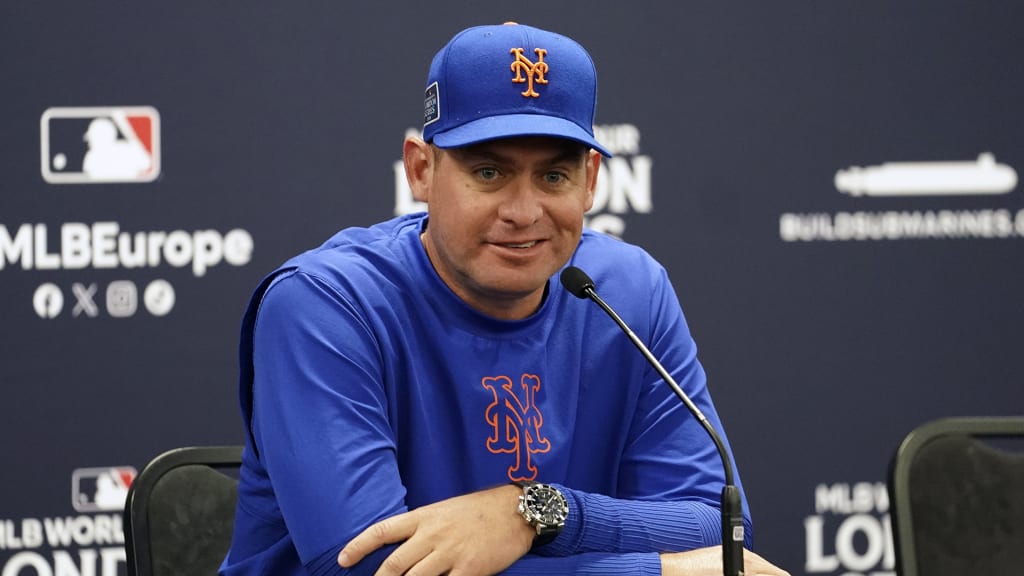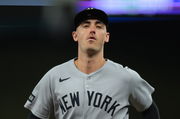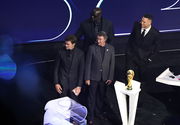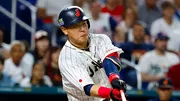
Imago
Credits: MLB.COM

Imago
Credits: MLB.COM
The New York Mets’ path to October glory has taken an alarming shift. Once billed as one of the deepest and most expensive rotations in baseball, the team is now relying heavily on untested arms as two vital veterans struggle mightily. What was once viewed as championship insurance is quickly becoming a World Series gamble, asking rookies to deliver under the brightest lights.
Watch What’s Trending Now!
Kodai Senga and Sean Manaea, once pillars of the Mets’ 2025 rotation, have lost their form. Senga has not been the same since returning from injury in mid-July, while Manaea has faltered with three straight poor outings. In their absence, manager Carlos Mendoza has turned to promising young pitchers like Nolan McLean and Jonah Tong, with top contender Brandon Sproat potentially next. This shift toward rookie dependency highlights a dangerous reality: the Mets’ World Series hopes may rest on pitchers with fewer than a dozen combined big-league starts.
WFAN’s Chris McMonigle raised the alarm on Monday night, pointing to the dangers of relying on such inexperience in a pennant race. “I just don’t know how you can, like, this rotation, and there are no other fixes, there’s Sproat. You can call up Sproat. That’s it,” McMonigle voiced. “They’re gonna have to fix Manaea, they’re gonna have to fix Senga. One of those two pitchers, if the Mets want to win the World Series, plain and simple… one of those two pitchers have to find a way to be what they were last year. Or at least close to it.” His comments echo what many fans are already thinking: the Mets can not ride rookies alone.
ADVERTISEMENT
Manager Carlos Mendoza confessed the situation is difficult, acknowledging both veterans remain part of the rotation despite their struggles. “Our job is to try and find a way to help them,” Mendoza said after Monday’s win in Detroit. “Right now, the biggest thing for Sean is he’s not elevating the fastball… and obviously not able to use the changeup and sweeper the way he wants to.” For Senga, it is more about regaining rhythm after crucial shortcomings. Still, the looming question remains: how long can the Mets wait for their veterans to come back to form before the playoff race passes them by?
.@CMacWFAN says the Mets and their payroll should not be relying on rookies to save their starting rotation, and potentially their season: pic.twitter.com/A7nHaLjd44
— WFAN Sports Radio (@WFAN660) September 2, 2025
The rookie arms have provided excitement, but history is not on New York’s side. Few teams have found October success relying on two or more rookie starters. The 2015 Mets, with Noah Syndergaard and Steven Matz, stand as a rare example. While McLean and Tong could craft similar stories, the safer path is for Senga or Manaea to regain form. For now, the Mets walk a tightrope, balancing player development with postseason urgency. Without veteran stability, the World Series dream risks slipping away under the weight of rookie reliance.
ADVERTISEMENT
Beyond pitching struggles, the Mets’ fate also ties to front office decisions around the trade deadline.
ADVERTISEMENT
David Stearns defends Mets’ deadline deals despite fan criticism
When the trade deadline passed without adding a frontline ace, fan frustration quickly surfaced. Many expected David Stearns to pursue a big-name starter to stabilize the rotation, but the front office opted for bullpen depth and lineup reinforcements. Gregory Soto, Ryan Helsley, Trevor Rogers, and Cedric Mullins were the headline acquisitions, though their struggles have fueled skepticism about playoff viability.
Stearns remains confident the strategy was correct. He explained that chasing top-tier pitching would have depleted the farm system, sacrificing near-ready prospects soon to impact the roster. While Helsley’s 10.38 ERA raises questions and Rogers has been inconsistent, Stearns believes these moves will pay off in September and October. The Mets are betting complementary pieces can bridge the gap between vulnerability and contention.
Top Stories
Blue Jays’ Bo Bichette Ambitions Dwindle as Red Sox’s Alex Bregman Backup Plan Confirmed

Yankees’ Cody Bellinger Hopes Fade Fast as Phillies Plan Desperate Push Amid Kyle Schwarber Uncertainty, per Insider

Aaron Judge’s Public Appearance Alongside Shaq, Tom Brady & Wayne Gretzky Turns Embarrassing for the Yankees Captain

Blue Jays Clash With Red Sox Over 29-Year-Old Japanese Star as Mets Fall Behind, per Report

Who Is Jazz Chisholm Jr.’s Fiancée? Everything You Need to Know About Ahna Mac


USA Today via Reuters
Credit: USA Today
The choice to prioritize caution over chaos at the deadline remains controversial. As the bullpen stabilizes and Mullins seeks consistency, fans watch closely. Should September bring wins, the quiet deadline may be justified; continued struggles will only intensify critiques. The Mets’ playoff hopes now hinge on Stearns’ gamble—how this drama unfolds will define their postseason fate.
ADVERTISEMENT
ADVERTISEMENT
ADVERTISEMENT
ADVERTISEMENT

